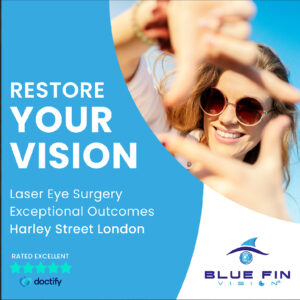Refractive lens exchange (RLE) continues to gain recognition as an ideal surgical solution for a growing number of individuals who are dissatisfied with their current vision correction methods, such as glasses or contact lenses. As the aging population continues to increase, RLE has become especially important for those looking to address both refractive errors and age-related vision changes, providing a way to restore clear vision without the continuous dependence on corrective eyewear. The procedure holds particular appeal for individuals over the age of 40, who may be beginning to experience presbyopia, a condition that makes it difficult to focus on near objects.
The versatility of RLE is one of its main advantages. Unlike LASIK, which is designed for those with mild to moderate refractive errors, RLE is often recommended for individuals with severe refractive issues, such as high degrees of myopia (nearsightedness), hyperopia (farsightedness), or astigmatism. These patients often find themselves disqualified from LASIK because their corneas may be too thin, irregularly shaped, or otherwise unsuitable for laser surgery. RLE, however, does not require altering the cornea’s shape. Instead, it focuses on replacing the natural lens with an intraocular lens (IOL) tailored to the patient’s specific needs, allowing for the correction of a wider range of vision problems.
For patients suffering from presbyopia, RLE offers a particularly effective solution. Presbyopia, which affects nearly everyone as they reach their 40s or 50s, leads to the gradual loss of the eye’s ability to focus on close objects. Reading glasses, bifocals, and progressive lenses are often required to compensate for this decline in near vision. Through RLE, patients can replace their aging natural lens with a multifocal or accommodating IOL, which is specifically designed to restore vision at multiple distances—near, intermediate, and far. This enables patients to achieve a fuller range of vision and significantly reduces or even eliminates the need for glasses.
In addition to presbyopia correction, RLE provides significant improvements for those with other refractive issues that affect the quality of life. People with high degrees of myopia or hyperopia, which can cause blurry vision for both near and distant objects, often struggle with the limitations of glasses and contact lenses. RLE can address these issues by replacing the eye’s natural lens with a carefully selected IOL. These lenses are designed to not only improve the refractive error but also provide lasting visual clarity, reducing or eliminating the need for corrective eyewear.

One of the most notable benefits of RLE is its Refractive lens exchange long-lasting and permanent results. Unlike glasses or contact lenses, which require regular updates and replacements over time, IOLs used in RLE are designed to stay in place for a lifetime, providing continuous vision improvement without the need for further intervention. This makes RLE a particularly attractive option for patients who are looking for a more permanent solution to their vision problems, as opposed to the continual hassle of prescriptions or changing lenses.
The procedure itself is minimally invasive and can be completed relatively quickly. Local anesthesia ensures that the patient remains comfortable throughout the process, and the use of advanced phacoemulsification technology allows the surgeon to remove the natural lens through a small incision. The artificial IOL is then inserted into the eye, where it unfolds and takes its proper position. The small incision made during the procedure typically does not require stitches, and the risk of complications is low.
Recovery after RLE is generally quick and straightforward. Most patients experience a significant improvement in their vision within a few days, although full stabilization of vision may take a few weeks. Post-operative discomfort is usually minimal, and patients may only experience mild symptoms like dry eyes or blurry vision. The majority of individuals can return to work and their usual activities within a few days, with only slight adjustments needed during the recovery phase.
While RLE is widely considered a safe procedure, there are some potential risks and side effects. These include infection, inflammation, or problems with the positioning of the IOL, although these complications are rare. Some patients may also experience visual disturbances, such as halos or glare, particularly at night. However, these symptoms generally resolve within a few weeks as the eye heals. Regular follow-up appointments are essential to monitor the healing process and ensure the IOL is functioning properly.
For those who are not ideal candidates for LASIK, or who are looking for a more permanent solution to vision correction, RLE offers an excellent alternative. It allows individuals to regain a clearer, more comfortable vision and reduces or eliminates the need for glasses or contact lenses. By addressing multiple visual issues at once—whether refractive errors or presbyopia—RLE enhances overall visual quality and provides a life-changing improvement in day-to-day activities.
Ultimately, refractive lens exchange has proven to be an effective, reliable, and lasting solution for many individuals who seek an improved quality of life through better vision. Whether addressing age-related vision changes or correcting significant refractive errors, RLE offers a promising future for those who want to enjoy a clearer, more independent lifestyle. With the advancements in IOL technology and surgical techniques, RLE is poised to remain a top choice for vision correction for years to come.…
